Office & Home Printing Business
Lead the evolution toward distributed printing to reduce environmental impacts and increase work productivity by proposing inkjet technology, paper recycling technology, and open solutions
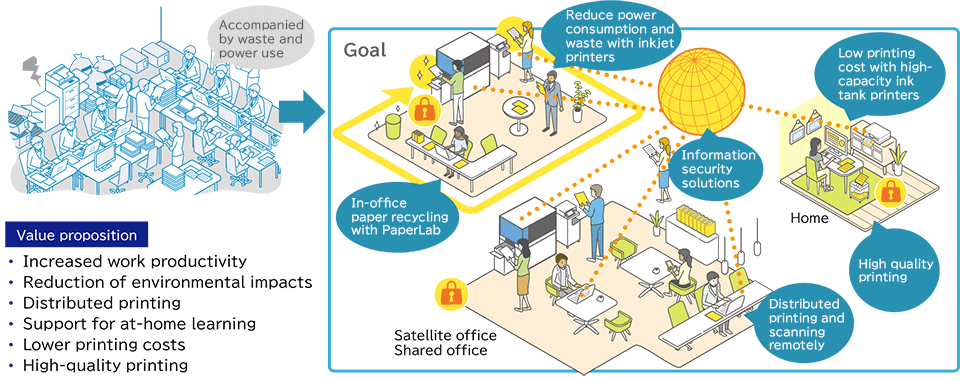
Strategy
Inkjet Printer for Small Office and Home
Epson is a pioneer in the market for high-capacity ink tank models which are suitable for low cost and high-volume printing. We saw growth along with the market expansion and will continue to maintain stable business operations by promoting the value of these printers.
Inkjet Printer for Office
Most of the MFPs and printers used in offices today use laser printing technology.
Epson aims to expand our market share in office printers and drive business growth by promoting inkjet technology for MFPs and printers which offer outstanding environmental performance and convenience.

Inkjet Printer for Small Office and Home
Offering a wide range of products, from ink cartridge models to high-capacity ink tank models to meet printing needs.
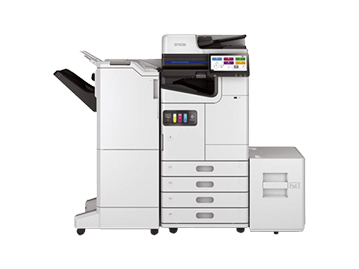
MFPs (Multifunction Printers) for Office
Offering lower environmental impact and stress-free operation with inkjet technology.
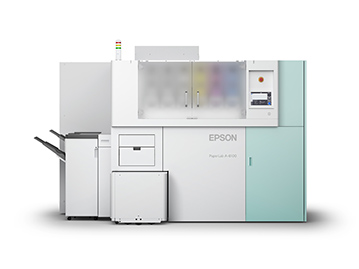
Dry-process Office Papermaking Systems
Producing new paper from used paper in a waterless process to decrease environmental footprint.
Main Solutions
Reducing Office CO₂ Emissions by half1with Inkjet Technology
Epson's inkjet printers offer low power consumption, due to having a simple printing process compared to laser printers. Furthermore, Epson's inkjet technology does not use heat to eject the ink. They also have fewer replacement parts, contributing to a reduction in environmental impact.
Epson aims to lessen the environmental impact in the office while capturing business growth by replacing laser printers with our inkjets.
In-Office Resource Circulation: "Paper Lab"
Epson's "Dry Fiber Technology" creates a new resource cycle within the office, by converting used paper back into fibers, which are bonded and formed into paper again.
By using PaperLab A-8100 to recycle paper, we can reduce CO₂ emissions compared to the lifecycle emissions of commercially available paper.2 Additionally, Epson will carbon offset the CO₂ emissions when using A-8100 to achieve "net zero3".
- 1 The reduction ratio when comparing the TEC of Epson Smart Charge A3 multifunction printers with the standard TEC given in the ENEGY STAR® Imaging Equipment Specification Version 3.0.
- 2 CO₂ emissions were calculated by Epson under the supervision of the Itsubo Laboratory, Department of Resources and Environmental Engineering, School of Creative Science and Engineering, Waseda University.
- 3 Operating conditions: For 10 years usage with approximately 2,000 sheets of plain paper per day, 240 days per year, the lifecycle CO₂ emissions for 1 ton of dry fiber paper, calculated to be approximately 1,755 kg, will be offset using carbon credits.
Global Market Share
Epson's market share (by volume) for Office & Home Printing is 20%, ranking third globally.
Share for inkjet printers is 32%, ranking second.
(including laser printers, unit volume)
Global Market Share1
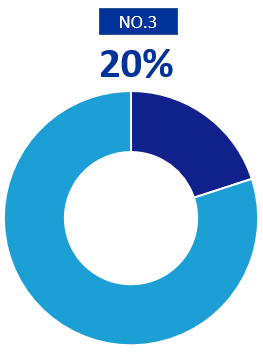
(unit volume)
Global Market Share2
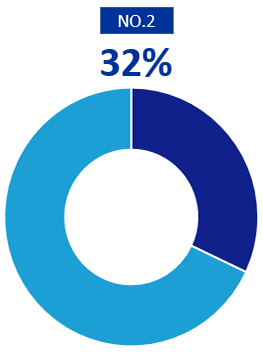
1 Source: IDC's Worldwide Quarterly Hardcopy Peripherals Tracker 2024Q2 Share by Brand. Laser printers = up to 90 ppm monochrome laser printers. Color laser = up to 69 ppm
2 Source: IDC's Worldwide Quarterly Hardcopy Peripherals Tracker 2024Q2 Share by Brand


